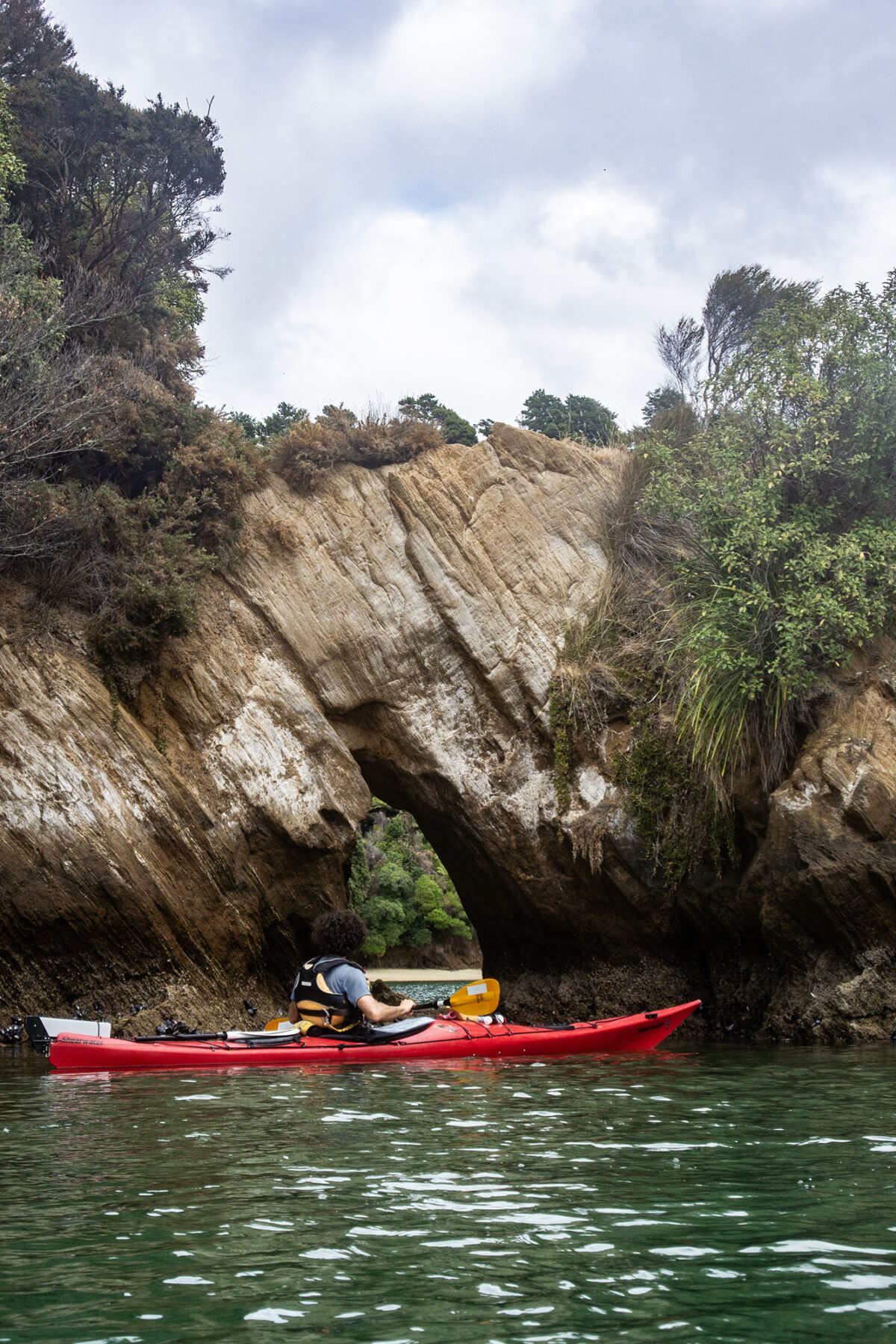If there’s a god of the outdoors, you can bet your life that said entity is behind the creation of New Zealand’s South Island. With its wild landscape encompassing everything from towering, snow-clad peaks, to deep rivers (and deeper fjords) and a mix of wild, near-untouched forests in between, it is the embodiment of a heaven-sent outdoor playground.
As well as this made-for-it landscape, the adventure infrastructure on the South Island is top-notch. NZ’s Great Walks track network (six of the 10 Great Walks are on the South Island) is world-renowned for its “ease of use” when it comes to getting over there and walking. And while both islands of NZ are also famous for their respective mountain biking scenes, the South Island is, literally, crisscrossed with both MTB trail networks and cycle touring opportunities. In fact, 13 of NZ’s 23 Great Rides are located on the South Island. Add in the fjords and rivers for paddling and – of course – the mighty Southern Alps for mountaineering and ice climbing, and you could spend nearly a lifetime in pursuit of outdoor perfection ‘down south’.
Feet first: Walking in the South Island
For keen multi-day hikers, the South Island is pure gold. With six of NZ’s Great Walks dotted around the island, from the northern coast’s Abel Tasman Coastal Walk and the nearby Heaphy Track (an AGA favourite) to Fiordland’s Kepler and Milford tracks, plus Mt Aspiring NP’s Routeburn Track in the south and the ‘new’ Paparoa Track in the west, you can pick and choose your desired experience in terms of which landscape you wish to walk through. In addition to these Great Walks, there are plenty of other backcountry hikes.
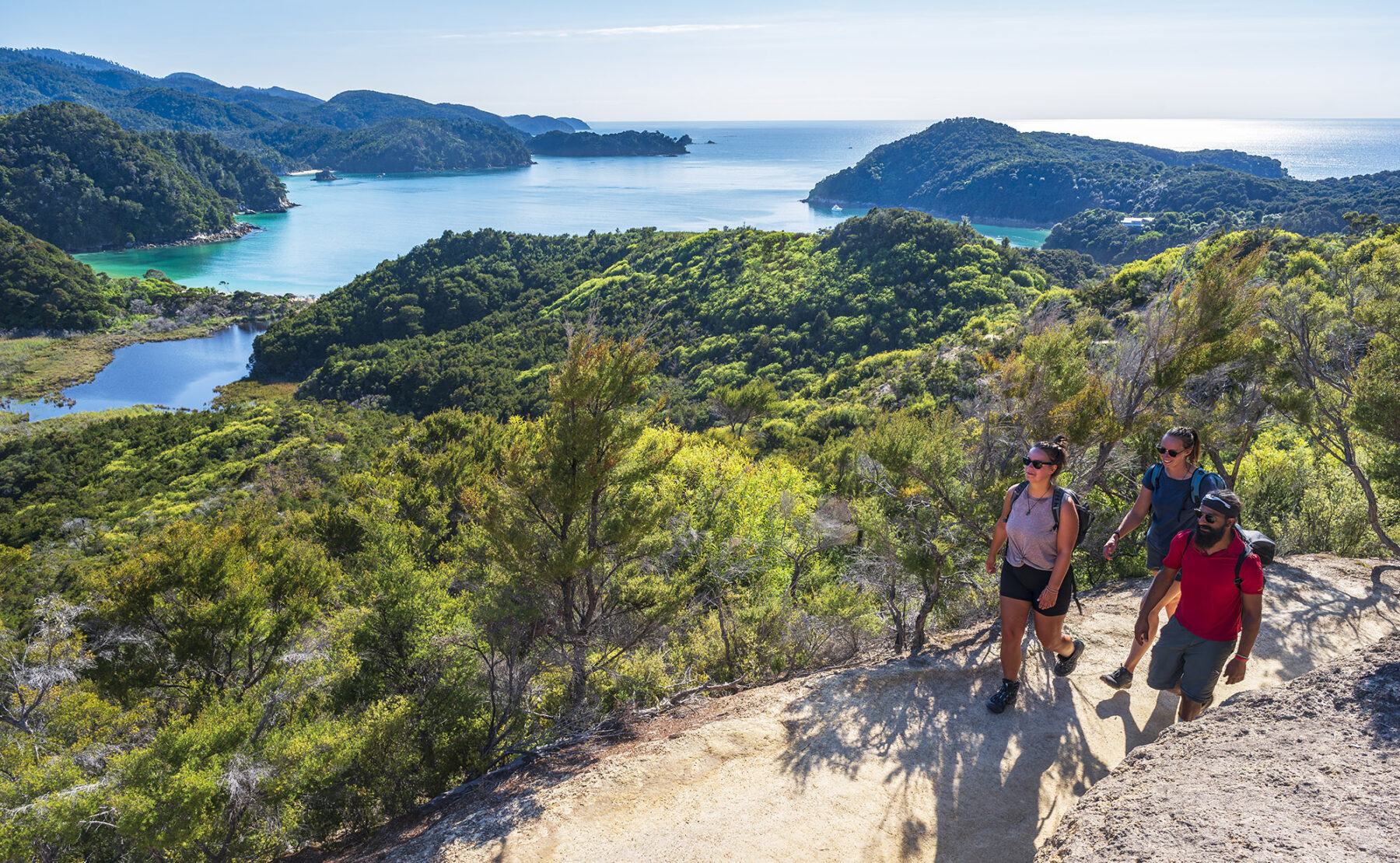
The set-up of the Great Walks is, really, the envy of the rest of the world; book your hut tickets and transport online via the NZ Department of Conservation (DOC) website’s Great Walks portal, then all you need to do is pack your gear and food, sort your flights, and you’ll soon be walking through an alpine or coastal wonderland. As mentioned, it is this ease of use when it comes to organising a multi-day walk that is the icing on the cake of what is a guaranteed epic experience. A heads-up, though, and reflecting their popularity, experiences such as the Milford and Routeburn tracks – along with the Abel Tasman Coastal Walk – are incredibly popular. To avoid disappointment, make sure you’re on the DOC booking site first thing on 1 July (when bookings open) to secure your desired dates. There are also guided options on the Milford and Routeburn tracks if you’re keen to explore that option.
Of course, there are far more than just the Great Walks. The proliferation of DOC backcountry huts throughout the South Island means you can opt for a more remote experience. Some of our favourite non-Great Walk multi-day walks include the four- to five-day Rees-Dart Circuit in Mt Aspiring National Park (NP), the Greenstone-Caples Circuit, and the remote (and mighty) eight- to 10-day Dusky Track, in Fiordland NP. These tracks are less popular than the Great Walks tracks as they are more rugged – and the huts are not as large, with no stoves (bring your own) – but the extra effort is worth it for those who are keen on more challenging, less crowded, routes. Transport to and from the more popular tracks’ end/start points is also easily organised via operators (these, as well as all DOC hut ticket pricing, can be found on the DOC website), which makes planning easy.
There are so many great tracks to choose from on the South Island that it’s near-impossible to name a stand-out. But, if we could only go with one, it’d be the three-day Routeburn Track. The neighbouring Milford Track gets a lot of attention, but the Routeburn is the perfect microcosm of the South Island hiking experience. Terrain ranges from wild rivers and deep alpine lakes to lush green rainforest and open alpine clearings with epic snow-capped mountain views. The DOC huts along this walk are fantastic, with one nestled beside a huge waterfall (Routeburn Falls Hut). Throw in some majestic alpine lakes (Lake Mackenzie Hut is located right beside its namesake), a fantastic side trip to Key Summit with its alpine tarns and Southern Alps views, and you have a crackerjack three days of walking in the wild. A bit further north you will find a big, challenging week in the wild, in the form of the eight-day Gillespie-Rabbit Pass Traverse.
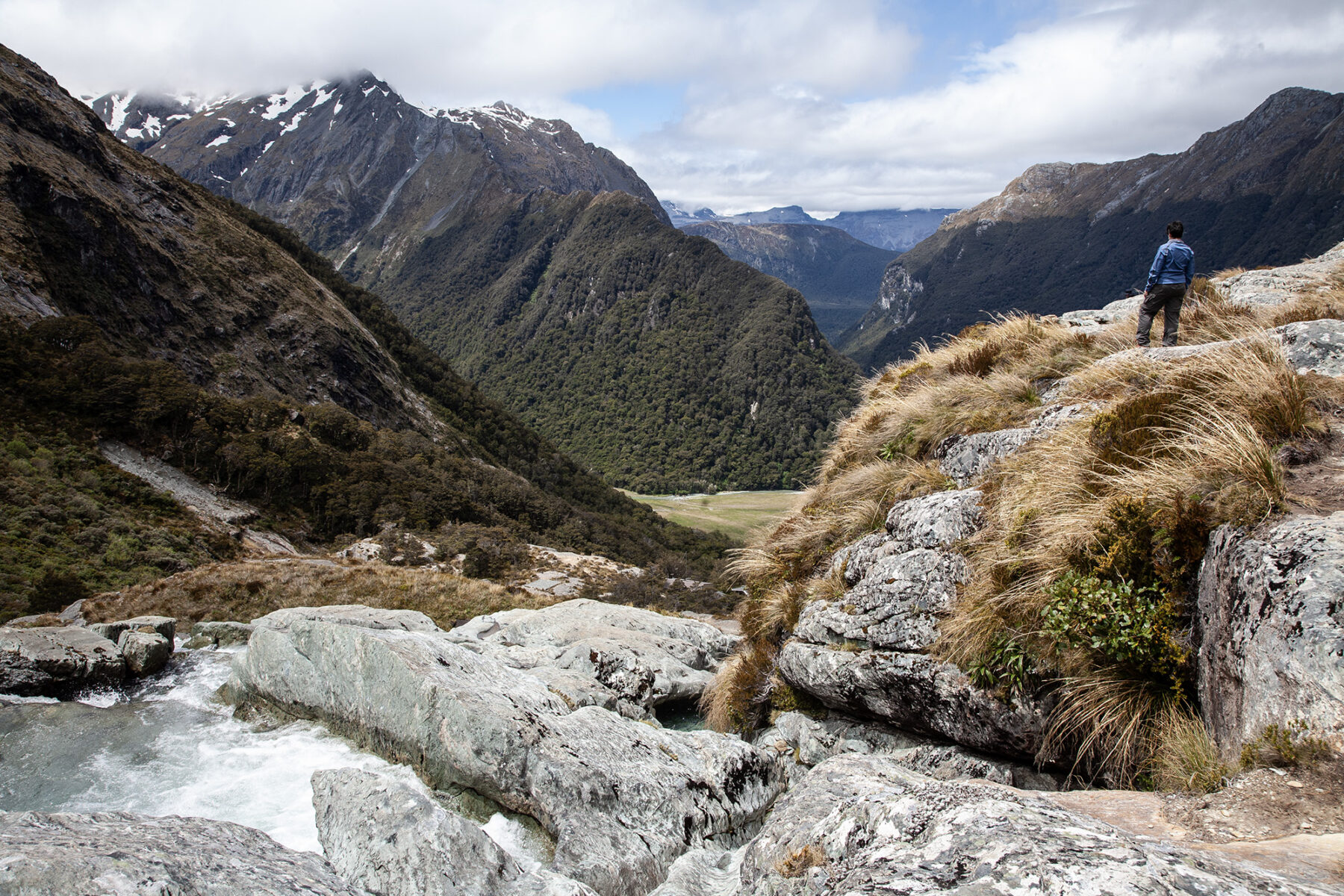
For an enthralling, but more chilled walk, there is the Queen Charlotte Track, in the Marlborough Sound region at the top of the South Island (see more below). Here, you can either walk the 73.5km from the northward start point of Ship Cove to Anakiwa, before making your way back to the harbour town of Picton, admiring the waters of the Marlborough Sounds along the way, or you can ride it on a mountain bike. You can also kayak part of it/all of it, if you so wish. Accommodation along the track is in lodges and you can have your luggage transported between each lodge (via boat), so you just walk with a day-pack. Yep, the experience is amazing.
Pedal power
From crackers downhill runs and winding cross-country trails to famous cycle touring routes that range from one day to multiple – as well as heli-bike trails – the South Island packs in plenty for two-wheeled adventurers. Mountain bikers are confronted with (excuse the pun) a mountain of options; Queenstown has its brilliant bike park right in town, complete with DH track and pump track. Nearby Wanaka is surrounded by trails of varying grades that can be ridden – or, as per Queenstown, accessed via helicopter – for epic days out on the bike, before returning to your accommodation in town for the obligatory post-ride beverages (this writer is a massive fan of Speight’s Old Dark Ale. Just sayin’…) and planning of the next day’s riding adventure. A fantastic intermediate-level ride just outside Queenstown is Skippers Canyon, while Wanaka’s Sticky Forest offers sublime singletrack, and Bike Glendhu MTB Park (at Glendhu Bay, just out of Wanaka) is also a great way to spend time on two wheels. Cycling families can enjoy the Hawea River Track, connecting Wanaka to the nearby township of Lake Hawea, as it is both fun and scenic.
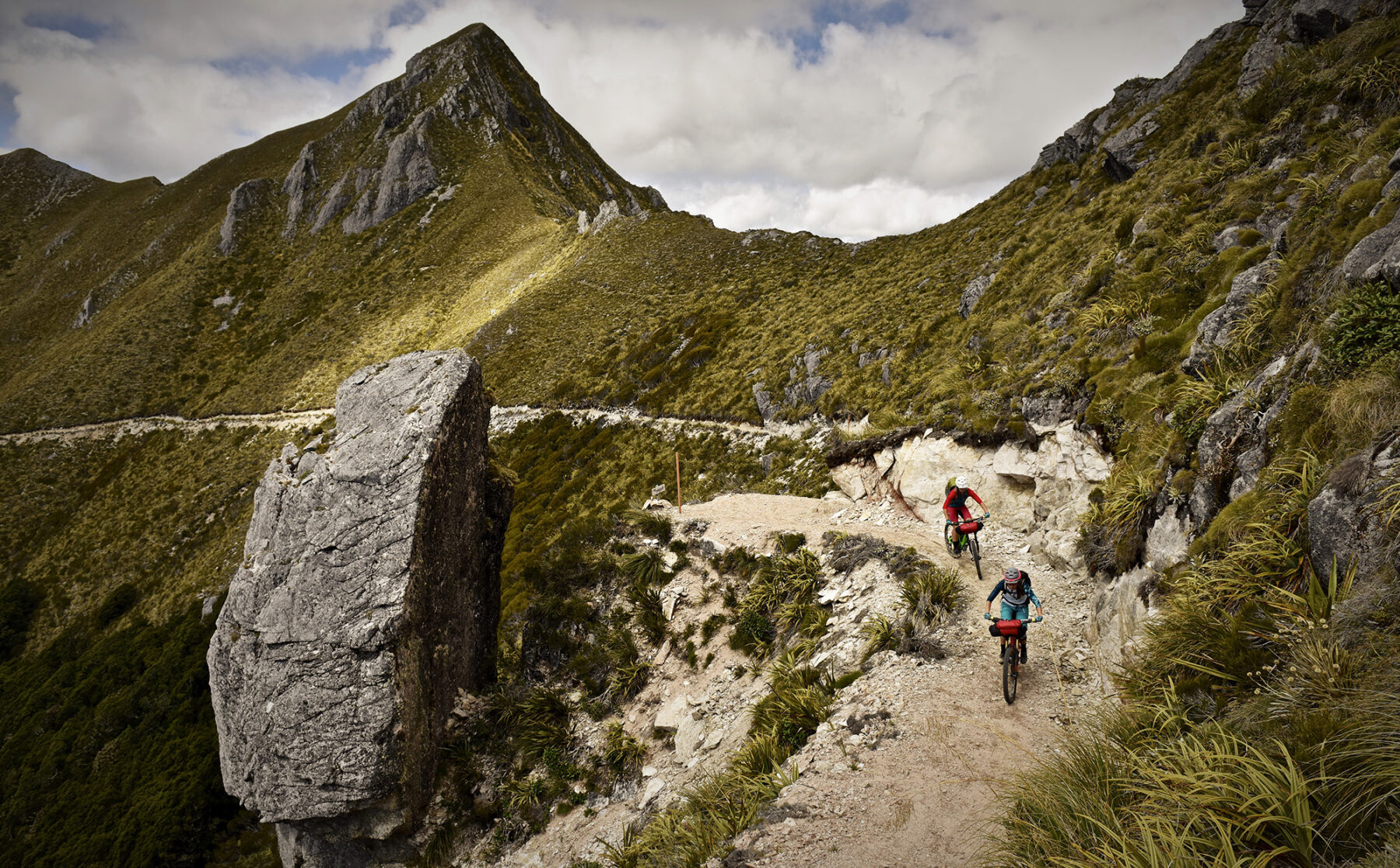
Further afield, on the South Island’s West Coast, around an hour from the town of Westport, is a true MTB big-bopper: the two- to three-day Old Ghost Road, touted as “NZ’s longest singletrack”. This 85km challenge (one of NZ’s 23 certified Great Rides) takes riders from deep in Buller Gorge through subalpine terrain all the way up above the tree line, staying in backcountry huts each night. Not too far from the Old Ghost Road is the Paparoa Track, the 10th Great Walk that is also a bike ride. The 56km two- to three-day ride takes you over the high range of the same name, with epic views (and great riding) along the way.
Two other multi-day MTB adventures, further north, are the Heaphy Track (seasonal access: 1 May-30 Nov) in Kahurangi NP, staying at DOC huts (or campsites), and parts of the beautiful Queen Charlotte Track (QCT), with only the first QCT section from Meretoto/Ship Cove to Camp Bay being closed in the peak summer season (1 December–28 February; for the rest of the year, water transport can be arranged to drop off at Camp Bay to start). This awesome adventure starts from Picton on the South Island’s northern coast, where you catch a ferry form Picton Harbour to the start of the track before riding back along the QCT to town. The Heaphy is a three-day adventure, while the QCT can be ridden in two to three days (or longer). Accommodation on the QCT is in lodges overlooking the Marlborough Sounds each night or in campsites. And yes, it is fantastic.
Of course, no story on cycling adventures on the South Island could be written without mentioning that most famous of NZ cycle trails: the easy-graded Otago Central Rail Trail (OCRT). Touted as NZ’s “original” cycle trail, the OCRT offers a brilliant tour of majestic Central Otago for riders of all ages and skill levels. Travelling through a landscape that alternates between mountainous terrain, to river gorges and high-country sheep stations, it is a true bucket-list cycle tour. The Full-Monty three- to five-day version (roughly 150km) connects the towns of Clyde and Middlemarch (you can ride in either direction) and you will pass through 20 towns along the way, so can either camp or stay in more luxurious digs. The gentle gradient and wide gravel trail ensure there’s plenty of time to look at the scenery as you roll past and, if you want, you can even buy a Rail Trail Passport as proof of this achievement. Nearby is another Central Otago must-ride: the one-day Lake Dunstan Trail.
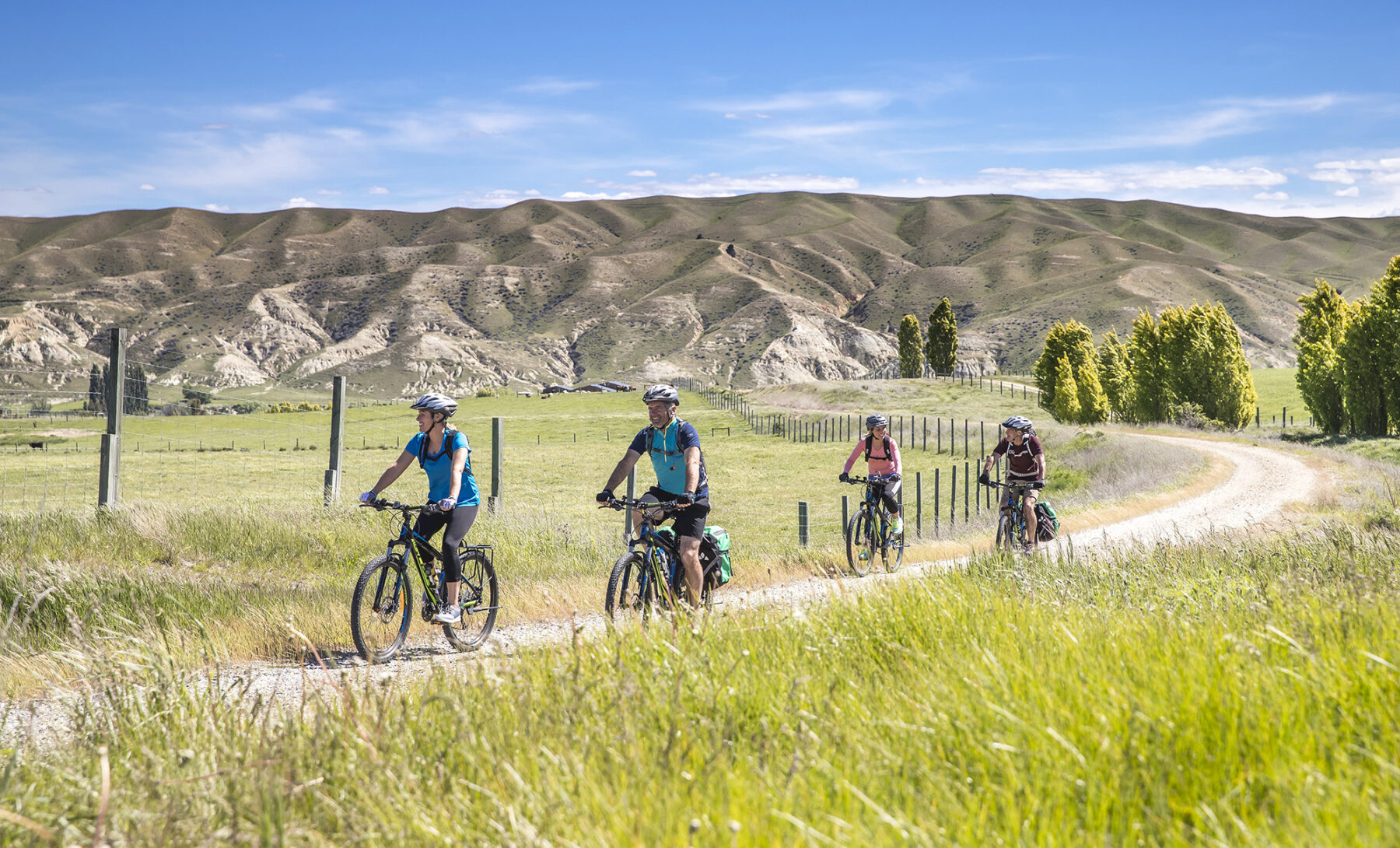
Another South Island big-bopper ride is the easy-intermediate Alps 2 Ocean Cycle Trail. This six-day, 312km epic takes riders from Mt Cook National Park (with its awesome views of that famous peak) across eight sections of trail that meander through forests, grasslands, beside rivers and lakes and (finally) beaches near the east coast town of Oamaru. The trail surface ranges from gravel to bitumen roads; for those with less time you can also drop in and out along the different sections for day rides.
Going high: Climbing in the South Island
The rugged Southern Alps stretch some 500km – nearly the entire length of the South Island – and the area is highly regarded by the global mountaineering community as a top-notch and challenging climbing destination. For Australian mountaineers, the South Island’s many peaks and the routes up them offer sublime climbing during summer (mainly) or, if you are an ice climber, you’ll be over there in the winter, chasing frozen waterfall routes. For ice climbing fanatics, winter in the Southern Alps is gold. Whether you opt to do an ice climbing course, or a guided trip, there are great locations dotted around Queenstown and Wanaka.
NZ’s highest peak – Mt Cook – is ‘just’ 3724m, but the mountains here can be very challenging; even though lacking in total height, the vertical gain – as in the actual distance you climb up – is equivalent to far taller peaks in the Himalayas, as climbing in NZ often starts from near sea-level (the Southern Alps in summer are popular with Northern Hemisphere climbers due to the technical challenges they offer). This makes for big days of climbing, and the weather is also volatile; get stuck on a peak up here and you can be snowed in/stranded for days.
All this shouldn’t take away from the awesome experience of climbing in the South Island’s alpine regions. Mt Cook, Mt Aspiring and Mt Tasman are the most well-known objectives for visiting mountaineers, but there are plenty of other mountains in the Alps that offer similar rewarding climbing, such as Mt Earnslaw and Mt Sefton. Thanks to NZ’s DOC backcountry and alpine hut system, you can base yourself out of a hut, such as Pioneer Hut, on the west coast, and pick off the summits of the many surrounding peaks.
NZ is obviously famous for its mountaineers (yep, Sir Ed Hilary, of course) and it also has fantastic climbing guide companies such as Adventure Consultants, Aspiring Guides (both based in Wanaka) and Alpine Guides (based out of the Mt Cook area). Each offer guided climbs of famous peaks such as Aspiring and Cook, and fully guided ‘Summit Weeks’ in the mountains where you are based out of a hut and can climb (or tweak your technique) over seven days up in the Alps. AG Adventure has been fortunate enough to tackle a few peaks with these companies over the years and cannot recommend them all highly enough. If we had to suggest any one peak, we’d opt for Mt Aspiring, located in the national park of the same name, and known as the southern hemisphere’s ‘Matterhorn’ owing to its similar profile to that of the famous European peak.
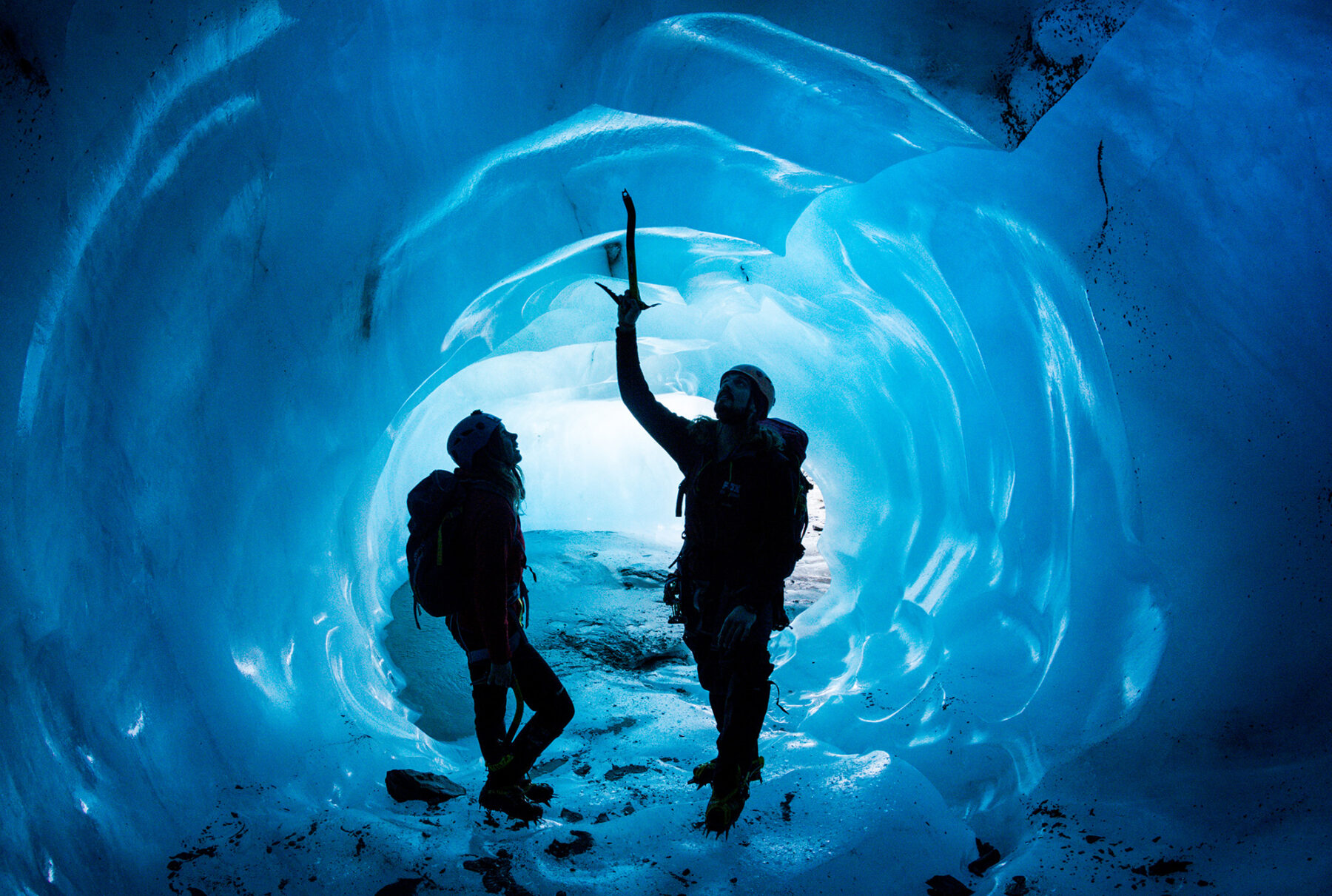
For those just looking to get started in alpine adventures, the South Island has some great high-altitude trekking routes. Ball Pass and Jubilee Pass are two, with the Jubilee Pass offering a crossing of the Southern Alps (it replaced the infamous Copland Pass as the preferred route).
Another option for families is a day trekking on Fox and/or Franz Josef Glacier. Guided trips run most days over summer and having the opportunity to explore these amazing features is awesome – the kids will love it.
Water, water, everywhere
Mention the South Island and most people think of the hiking, climbing and biking opportunities, but the island is also a popular paddling destination. For sea kayakers, the northern coastline is the draw, with a multi-day Abel Tasman coast paddle Kaiteriteri and Golden Bay’s Tata Beach. This trip follows (roughly) the Abel Tasman Coastal Walk route; there’s plenty of camping available at beaches along the way (or you can book into a DOC hut), it offers the chance to paddle alongside always-curious New Zealand fur seals.
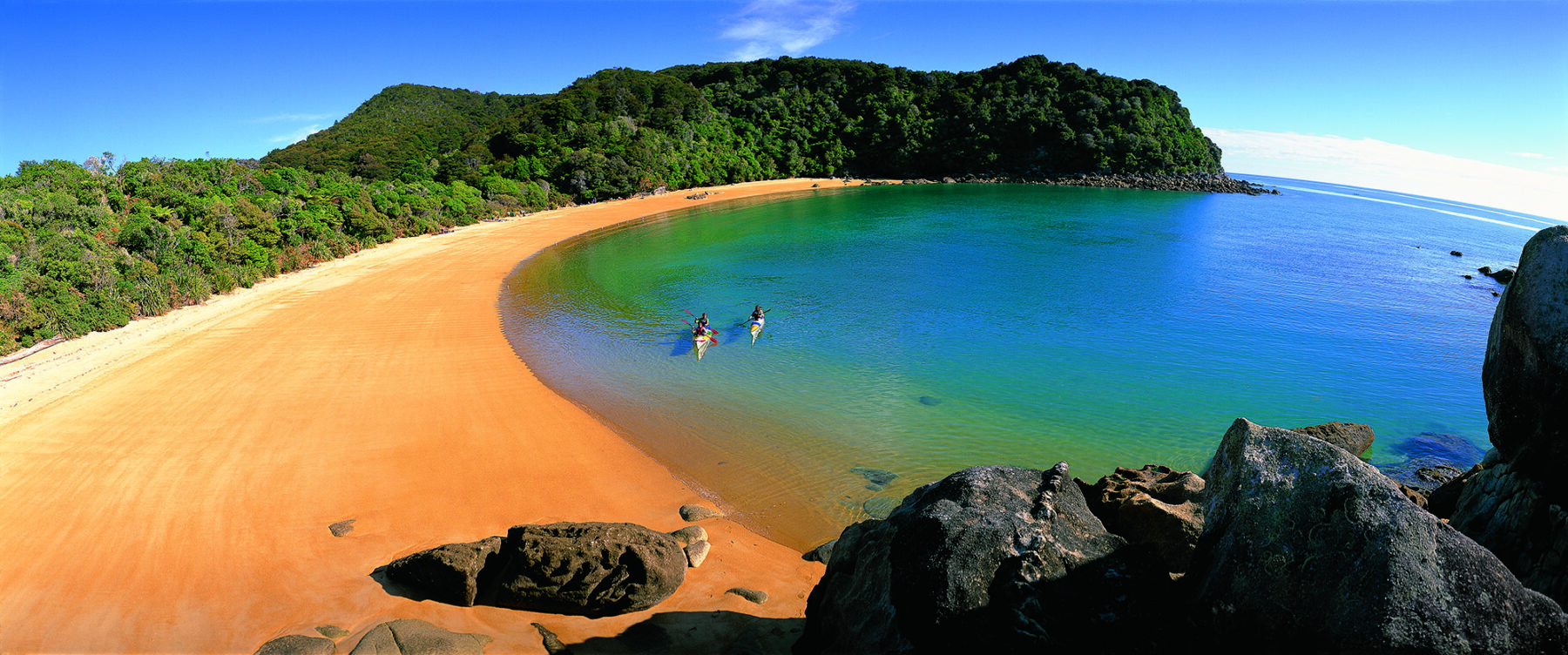
The Queen Charlotte Track is known as a hike or bike route that winds through the Marlborough Sounds region on the north/northeast coast of the South Island. You can also kayak here, with options ranging from single-day guided paddles through to multi-day adventures (guided or independent) where you can spend the night in a variety of accommodation options and even have your gear transported there each day via boat, so you only have to pack your day’s equipment in your kayak.
Venture further south to the Fiordland region (note: Kiwis spell ‘fjord’ as ‘fiord’) and you have the choice of canoeing, rafting, or kayaking some of this region’s white-water, including the Landsborough River, or you can once again jump in a sea kayak and explore the ‘big four’ waterways – lakes Manapouri and Te Anau, and Doubtful and Milford sounds – either as day trips or multi-day adventures. Lake Manapouri is often described as NZ’s most beautiful lake, and with more than 30 islands, plenty of quiet bays to explore and brilliant beach camping, it’s a great multi-day kayak trip for keen independent paddlers.
Milford and Doubtful sounds offer fantastic kayaking. For families and those with less time, a day paddle on Milford Sound is memorable, albeit a bit busy in terms of additional boating traffic, but you can still escape the crowds and score random seal and penguin encounters. For a genuine wilderness paddling experience, however, we’d opt for Doubtful Sound. This fjord is far more remote, there is no commercial boating there and you can opt for a multi-day paddle with camping that will make you feel like you’re the last person on earth. The best option for both fjords is a guided trip, with all equipment supplied and experienced guides on hand.
With all that snowmelt from the Southern Alps feeding numerous waterways, white-water rafting fans are not left out on the South Island. Famous day rafting trips, such as those down the Kawarau and Shotover rivers near Queenstown, or the Rangitata River just outside Christchurch, provide a huge adrenalin rush. For more experienced white-water kayakers, there are several more remote rivers to explore and enjoy on day- or multi-day paddles, while canoeing families can cruise in inflatable canoes (dubbed ‘funyaks’) down the pristine Dart River.
And there’s more…
If we had 100 pages, it would not be enough to cover all the adventure opportunities on NZ’s South Island. As well as what we’ve listed, there is obviously the island’s epic ski season in winter, with some of the best ski fields in the world found here.
There is also plenty of brilliant camping to be had; just pitch a tent or, if you have a young family, hire a campervan, and explore the South Island for a fantastic and memorable experience. The campgrounds and caravan parks in NZ are very well set up to cater for vehicle-based visitors, with most of them having games rooms/playgrounds and usually located in pristine spots. Most of the natural attractions are very easy to access and there are numerous day walks, lookouts, swimming locations, farm stays and short bike trails (several Great Rides are geared toward family cycling) spread throughout the island to keep both the parents and their young’uns enthralled.
It is the South Island’s fantastic – and brilliantly effective – tourism infrastructure that just adds that cliché of “icing on the cake” to any visit there. And this is the concluding reason – on top of all the other awesome ones in this yarn – for why my next family adventure will be a road-trip through this outdoor wonderland: there’s an adventure waiting for all ages on the South Island – you just need to get over there and it will find you.
Fact File
Getting there: Air New Zealand and Qantas fly to NZ, with Christchurch and Queenstown the two main destinations.
When to go: You can visit the South Island all year with summer and winter especially popular. We’d highly recommend autumn and spring; fewer visitors and still-fine weather make these two seasons the best-kept secret for those looking for a fun (and less crowded) adventure in NZ.
Walking: The Department of Conservation is a treasure-trove of info on all walks through the South Island.
Cycling: The Great Rides of New Zealand is a collection of 23 cycling routes, ranging from challenging MTB trails to road touring options, and there are 13 of these on the South Island. Mountain biking is massive in NZ, with guided and independent options available.
Climbing: For keen mountaineers, the Southern Alps is alpine heaven. For climbing courses and guided climbs, Adventure Consultants, Aspiring Guides and Alpine Guides are all excellent.
Paddling: Whether it is sea kayaking, canoeing, SUP or white-water rafting, the South Island has a waterway for any paddling skill level.
Guided adventures: World Expeditions offers guided walking, climbing and cycling adventures in the South Island.
More info: See Tourism New Zealand for more info on all things South Island.






